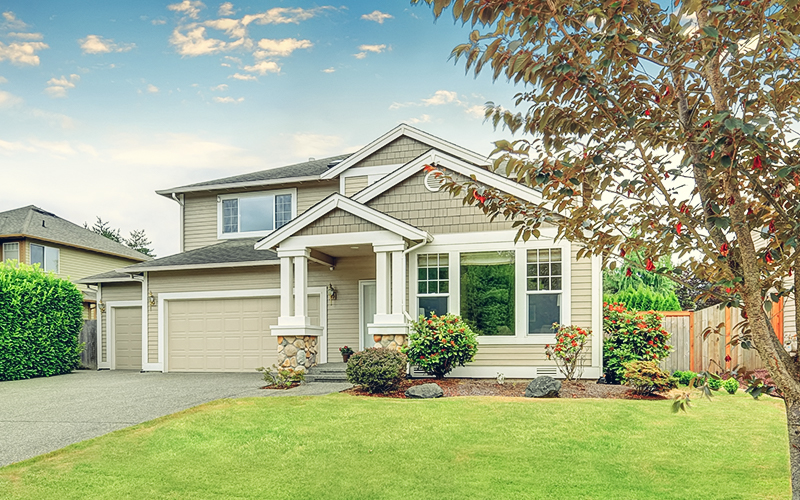
Whether you are a new homeowner or have lived in your house for years, understanding the needs of your dwelling is crucial to maintaining its functionality, efficiency, and overall value. A thorough assessment allows you to identify areas that require attention and prioritize necessary repairs or upgrades. In this article, we will delve into the process of assessing the needs of your house, exploring key areas to consider and providing valuable insights to help you make informed decisions.
1. Structural Integrity
The first step in assessing your house is evaluating its structural integrity. This encompasses various elements, including the foundation, walls, and roof. Begin by inspecting the foundation for any cracks, uneven settling, or signs of water infiltration. Such issues can compromise the stability of your house and should be addressed promptly by a professional.
Next, turn your attention to the walls. Look for cracks, peeling paint, or bulges, as these could indicate structural issues or moisture problems. It is important to identify the root cause of any damages to prevent further deterioration.
Lastly, scrutinize the roof for missing or damaged shingles, leaks, or sagging areas. A sturdy roof protects your house from the elements and ensures the safety of its occupants. Engaging a qualified roofer to conduct a comprehensive inspection is advisable, as they possess the expertise to identify hidden issues that may not be immediately apparent.
2. Electrical System
A well-functioning electrical system is vital for the comfort and safety of your house. When assessing the electrical needs of your dwelling, consider factors such as the age of the wiring, the capacity of the electrical panel, and the presence of outdated or faulty components.
If your house has older wiring, it may not be equipped to handle the demands of modern appliances and electronics. In such cases, it is wise to consult an electrician to determine if an upgrade or rewiring is necessary.
Additionally, inspect the electrical panel to ensure it is in good condition and capable of meeting your power requirements. Outdated panels may pose a safety hazard and should be replaced by a qualified professional.
Lastly, be on the lookout for any signs of faulty wiring, such as flickering lights, frequent circuit trips, or warm electrical outlets. Promptly addressing these issues can prevent potential electrical hazards and safeguard your house from fire risks.
3. Plumbing System
A properly functioning plumbing system is essential for everyday activities such as bathing, cooking, and cleaning. When assessing the plumbing needs of your house, pay attention to both visible and hidden components.
Inspect all visible pipes for signs of corrosion, leaks, or water stains. Additionally, assess the water pressure in various areas of your house to identify any potential issues.
While visible plumbing problems are relatively easier to spot, hidden issues can be more challenging to detect. Engaging a professional plumber to conduct a thorough inspection, including the examination of hidden pipes and drains, can help identify any underlying problems.
In particular, be mindful of outdated or damaged pipes that may be prone to leaks or bursts. Replacing aging plumbing infrastructure can prevent costly water damage and ensure the efficient functioning of your house.
4. Energy Efficiency
Assessing the energy efficiency of your house not only helps you reduce utility bills but also contributes to a more sustainable environment. Evaluating the energy needs of your dwelling involves examining various aspects, from insulation and windows to heating, ventilation, and air conditioning (HVAC) systems.
Start by inspecting the insulation in your house, particularly in the attic and walls. Proper insulation prevents heat transfer and helps maintain a comfortable indoor temperature year-round. If your house lacks adequate insulation, consider adding it to improve energy efficiency.
Next, assess the condition of your windows. Look for cracks, gaps, or drafts that allow heat or cold air to escape. Upgrading to energy-efficient windows can significantly enhance your house’s insulation and reduce heating and cooling costs.
Additionally, evaluate the performance of your HVAC system. Regular maintenance, such as cleaning or replacing filters and scheduling professional inspections, ensures optimal functioning and prolongs the lifespan of your equipment. Consider investing in a programmable thermostat to further optimize energy usage and reduce wastage.
5. Safety Measures
Lastly, when assessing the needs of your house, it is crucial to prioritize safety measures. Protecting your house and its occupants from potential hazards should be a top priority. Consider the following aspects to enhance the safety of your dwelling.
- Fire Safety: Install smoke detectors on every floor of your house and ensure they are in working order. Create and practice an evacuation plan with your family to ensure everyone knows what to do in case of an emergency.
- Security: Evaluate the security measures in your house, such as door and window locks. Consider installing a home security system to deter potential intruders and provide peace of mind.
- Carbon Monoxide Detection: Carbon monoxide is a silent killer, as it is odorless and colorless. Install carbon monoxide detectors near bedrooms and fuel-burning appliances, such as gas furnaces or stoves, to protect your household from this deadly gas.
- Accessibility: Assess the accessibility of your house, especially if you have elderly or disabled family members. Consider installing handrails, ramps, or other modifications to ensure a safe and comfortable living environment.
By addressing these safety measures, you can minimize potential risks and create a secure living space for you and your loved ones.
In conclusion, assessing the needs of your house is a crucial undertaking that enables you to maintain and enhance the functionality, efficiency, and safety of your dwelling. By evaluating the structural integrity, electrical and plumbing systems, energy efficiency, and safety measures, you can identify areas that require attention and take appropriate action. Regular assessments and prompt repairs or upgrades contribute to the longevity and value of your house, providing you with a comfortable and secure place to call home.
